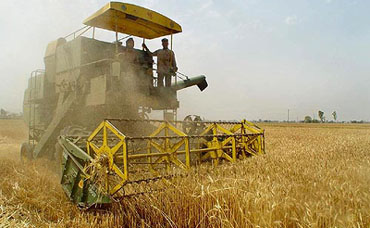Storage Capacity & Utilization
 PRESERVATION of agricultural produce and other commodities is essential to sustain human life and economy. It binds the other two vital components of a healthy economy viz. PRODUCTION and PROSPERITY. We are committed to make this link even stronger by reducing losses in private storage.
PRESERVATION of agricultural produce and other commodities is essential to sustain human life and economy. It binds the other two vital components of a healthy economy viz. PRODUCTION and PROSPERITY. We are committed to make this link even stronger by reducing losses in private storage.
The post harvest losses of food grains in storage alone are very substantial. Such losses thwart our attempt to boost agricultural production and maintain self-sufficiency in food grains.
The primary cause leading to loss in quality and quantity of agricultural produce during its storage are :
- Metabolic activities of insects and mites cause dry heating in the produce.
- Presence of higher moisture contents in the stocks at the time of storage cause sprouting, moulding and heating.
- Various chemical changes take place during storage which cause acidity and deterioration of gluten, vitamins, etc.
- Insects and rodents apart from eating away the produce , pollute it by contamination with their urine, excreta and carcass.
- Insects and mites eat away the germ portion of the grain rendering it unfit for germination
- Mites impart objectionable odor .
Such losses can be avoided by using modern warehousing techniques based on scientific storage.
Scientific storage and preservation of agricultural produce is the only way out to maintain quality and quantity of stocks.HWC is providing facilities of scientific storage and preservation to wide range of depositors like Farmers , Traders, Exporters, FCI, HAIC, HAFED, Fertilizer agencies , etc.
Storage Capacity And Utilization
Our scientific outlook and work culture has enabled us to handle and efficiently operate a net work of over 111 warehouses of over 2 million tonne of storage capacity. The figures of average storage capacity and its occupancy augur well of our success in reducing storage losses to a negligible level by way of scientific storage.
| AVERAGE STORAGE CAPACITY & OCCUPANCY OF WAREHOUSES | |||||||||
|---|---|---|---|---|---|---|---|---|---|
|
2011-12 |
2012-13 |
2013-14 |
2014-15 |
2015-16 |
2016-17 |
2017-18 |
2018-19 |
2019-20 |
|
| Total average storage capacity (lakh MT's) | 16.63 | 18.88 | 17.91 | 16.77 | 17.23 | 17.12 | 16.59 | 19.70 | 22.58 |
| Average occupancy in Lakh MT's | 16.51 | 19.66 | 16.03 | 11.72 | 11.81 | 12.61 | 14.05 | 19.13 | 23.11 |
| Average occupancy in percentage | 99 % | 104 % | 90 % | 70 % | 69 % | 74 % | 85 % | 97 % | 102% |

